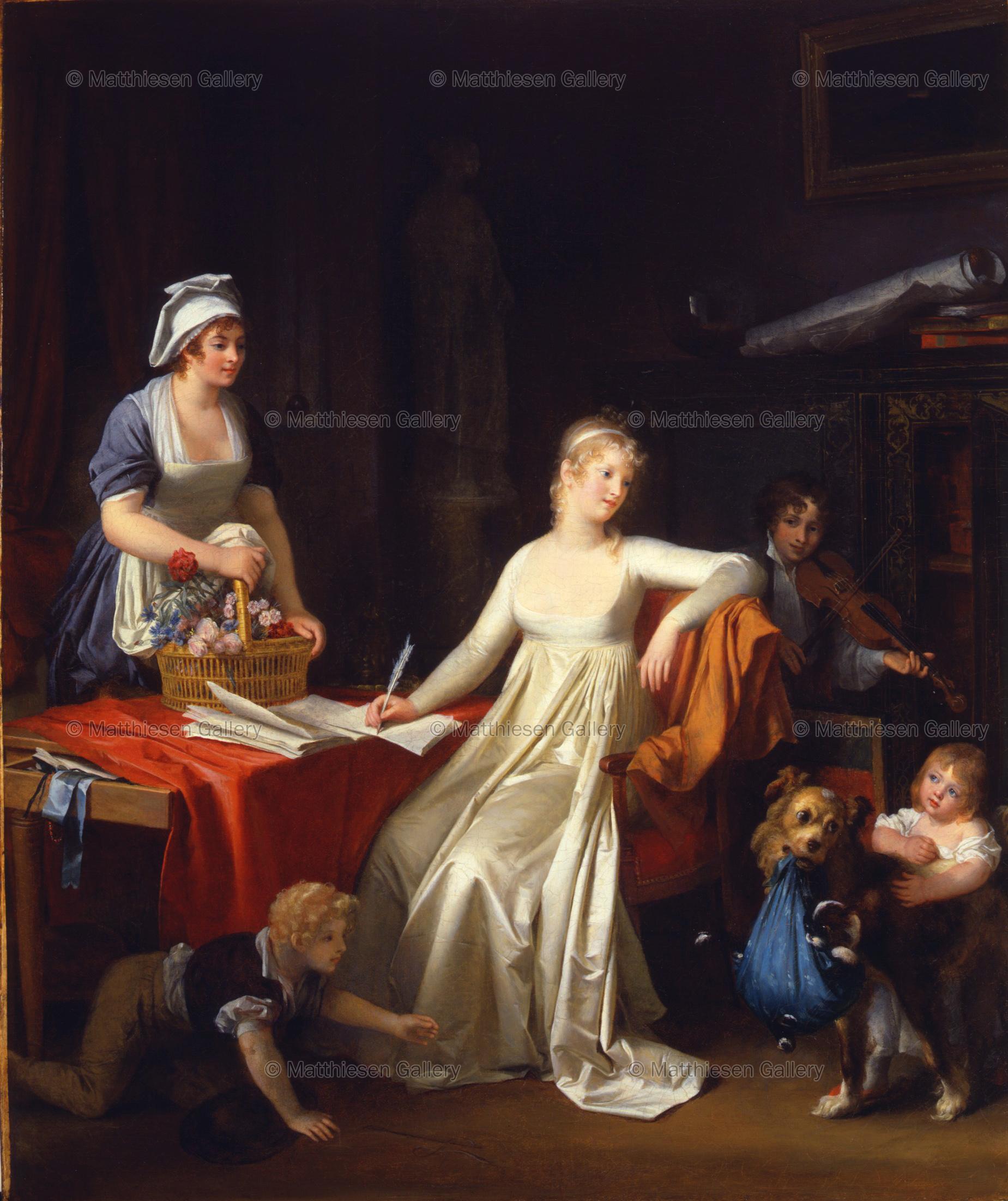The Interruption(Marguerite Gérard)
In later works such as The Interruption dating from circa 1800 there is little of Fragonard’s influence to be seen, although the older painter, by then a widower, was living with his sister-in-law. Her portrayal of women and children, of fabrics and furnishings, are made with a sensitivity that reflected her own personality. Unlike Boilly, with whom Gérard is often compared, she avoided any attempts at representing the lower orders or social realism. Her elegant ladies and gentlemen, mostly from the upper bourgeoisie, often move in a world seemingly untroubled by the wars and revolutions that wreaked such havoc in the quarter century from the revolution to the fall of Napoleon. In this important work there is a touch of melancholy in the expression of the young lady of the house going over the household accounts with her maid, The solemn faced boy playing the violin and the large dog ably fulfilling the role of protector of the young, are poignant reminders of the plight of the families of those facing death in France’s army and navy.
This painting (described in the catalogue of the 1801 Salon where it was exhibited as Scène d’Intérieur) is given a more elaborate title by Ms Sarah Wells-Robertson in her doctoral dissertation on the artist – Jeune Femme Interrompu par ses Enfants (young woman interrupted by her children). The painting was widely praised by the Salon critics, particularly for its anecdotal charm and the treatment of the accessories. Among the praiseworthy details is the familiar mirrored globe complete with the reflection of the artist at work, a device used in two earlier works (L’Élève Intéressante and L’Art d’Aimer). One critic described the color scheme as ‘extrêmement séduisante’ despite the dissonance of the orange-blue palette which reveals the artist’s awareness of the neo-classical aesthetic. Gérard seems normally to have preferred a cool silvery range of colors very different from the rich, warm palette favored by Fragonard. The Journal des Débats reported that an engraving after this work would soon be published but no print has yet been located.
Adolph von Heydeck, Sale, Leipzig, 22 June 1857, no. 84 (?); Sale, London, 24 March 1865, no. 88; Simon Fleet, England; Sale, London, 27 Nov. 1954, no.70; Lady Juliet Duff, England; Private Collection, Paris, to 1995.
R. Monsaldy, Contre-Epreuves des Croquis pour les Salons de l’An VIII, de l’An IX, et de l’An XII, Paris 1800-04, no. 154; Journal des Arts, 1801, p.88; Journal des Débats, 1801, p. 137; Journal de Paris, 1801, p. 2168; Charles Landon, Annales du Musée, 1801, p. 108; Moniteur Universel, 1801, p. 695; Burlington Magazine, 1961, Pl. VIII; Sarah Wells-Robertson, Marguerite Gérard 1761-1837 (2 vols), Cat. 61, pp. 53, 76, 116, 155, 159, 833.
Paris, Salon of 1801, no.154; Paris, Galerie Heim, Le Choix de l’Amateur March 15-April 30, 1974, no. 42.

